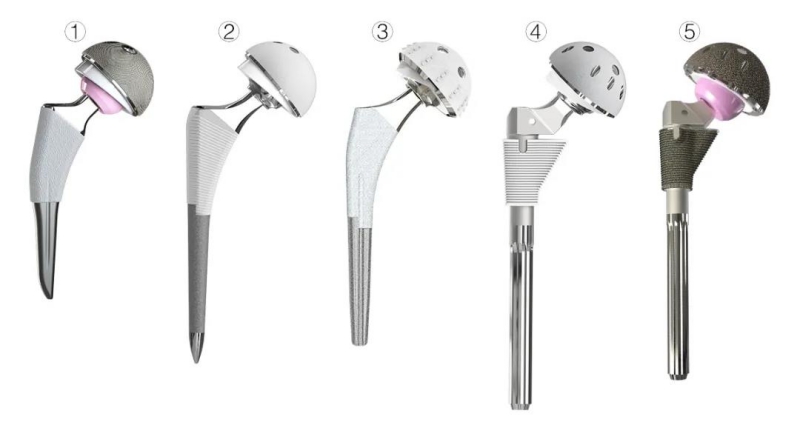Do You Really Understand the Non-Cemented Shaft of the Femur?
 Aug. 17, 2020
Aug. 17, 2020
From the perspective of the femoral stem prosthesis itself, there are many factors that influence the fixation effect of the cementless femoral stem prosthesis, including early mechanical fixation and long-term biological fixation. Let us understand one by one!
1. Early mechanical fixation
Tapered stem: suitable for most of the patients with the first replacement, for Dorr Type B medullary cavity with good fit, suitable for part of Dorr Type A medullary cavity.
Rectangular stem: suitable for Dorr B type medullary cavity.
Modular stem: suitable for Dorr Type A medullary cavity and DDH patients with Dorr Type C medullary cavity who need to adjust femoral anteroposterior inclination.
The good match between the non-cemented femoral stem and the medullary cavity is a prerequisite for early mechanical fixation of the prosthesis.

2. Long-term biological fixation
The surface treatment of the prosthesis determines its long-term biological fixation. The pore size, porosity, and roughness of the surface porous structure all affect the ability of the prosthesis to integrate.
Pore size
Clinical studies have shown that: pore size> 300 microns is conducive to the formation of new bone and vascularization.
Porosity
The porosity of human cancellous bone is 50%-90%, and the porosity in this interval is considered to be the most conducive to bone growth. The research on the bone ingrowth ability of different porosity prostheses found that the higher the porosity, the more obvious the effect of bone ingrowth.
Roughness
Roughness affects the "grasping" ability of the prosthesis and the host bone. High roughness and high friction coefficient provide the basis for osseointegration of the prosthesis and realize long-term biological fixation.
Just provide different designs of cementless femoral stems to meet the requirements of different medullary cavity shapes and achieve long-term biological fixation.
①MINI minimally invasive biological femoral stem
②HARMONY tapered non-cemented femoral stem
③DELTA rectangular non-cemented femoral stem
④ASM modular non-cemented femoral stem
⑤3D SEE trabecular bone modular type femoral stem













